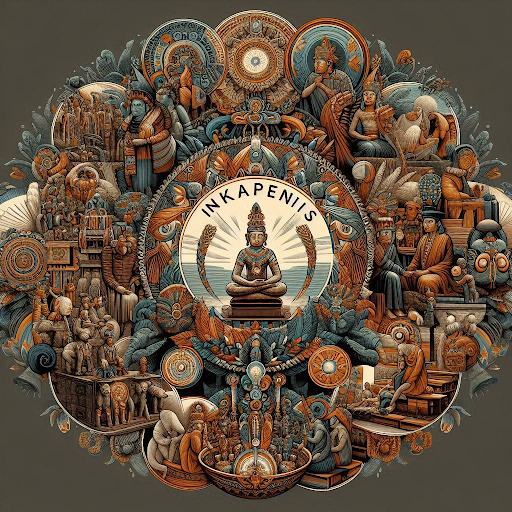Contents
- 1 Introduction to Inkapeñis
- 2 Historical Roots of Inkapeñis
- 3 Cultural Significance of Inkapeñis
- 4 Language and Expression in Inkapeñis
- 5 Rituals and Practices in Inkapeñis
- 6 Challenges in Preserving Inkapeñis
- 7 Efforts to Revitalize Inkapeñis
- 8 The Role of Education in Preserving Inkapeñis
- 9 The Global Importance of Inkapeñis
- 10 Conclusion
Introduction to Inkapeñis
Inkapeñis is a term that encapsulates the essence of a rich cultural heritage. It represents a profound tradition or practice deeply rooted in the history and identity of a specific community. Understanding Inkapeñis allows us to appreciate the diversity and richness of human culture, as it reflects unique customs, practices, and beliefs passed down through generations. In a rapidly changing world, preserving and honoring traditions like Inkapeñis becomes even more critical, as they provide a sense of continuity and belonging.
Historical Roots of Inkapeñis
The origins of Inkapeñis can be traced back to ancient civilizations that valued the importance of communal bonds, storytelling, and artistic expression. These early societies developed practices and rituals that embodied their collective identity, serving as tools for social cohesion and communicating values. Inkapeñis, in its various forms, has been integral to preserving history, enabling communities to connect with their past while navigating the present challenges.
Cultural Significance of Inkapeñis
Inkapeñis is more than just a collection of customs and practices; it reflects a community’s understanding of itself and its place in the world. The cultural significance of Inkapeñis lies in its ability to convey a group of people’s worldview, values, and beliefs. Through Inkapeñis, communities express their identity, celebrate their heritage, and reinforce their bonds.
Inkapeñis traditions are often centered around key aspects of life, such as birth, marriage, and death, as well as important seasonal events and communal gatherings. These rituals and practices serve as a way to connect with the spiritual world, honor ancestors, and ensure the continuity of the community’s values and beliefs.
Language and Expression in Inkapeñis
Language is a fundamental component of Inkapeñis, serving as the primary means of communicating traditions and values. The stories, proverbs, and expressions unique to a culture are integral to transmitting Inkapeñis, encapsulating a community’s collective wisdom and experiences.
The importance of language in Inkapeñis cannot be overstated, as it is through language that a community’s values, beliefs, and traditions are passed down from generation to generation. By preserving and promoting the use of traditional languages, communities can ensure that the cultural heritage of Inkapeñis continues to thrive.
Rituals and Practices in Inkapeñis
Rituals are at the heart of Inkapeñis, encompassing a wide range of activities that mark significant life events, seasonal changes, and communal gatherings. These rituals provide a sense of continuity and belonging, connecting individuals to their community and shared history.
In Inkapeñis traditions, rituals often bridge the past and present, allowing each generation to add its layer of meaning while honoring the legacy of those who came before. These rituals may involve ceremonies, dances, songs, and other forms of artistic expression that reflect the community’s unique cultural heritage.
Challenges in Preserving Inkapeñis
In today’s globalized world, many traditional practices, including Inkapeñis, face the threat of erosion due to modernization, cultural homogenization, and external influences. As societies become more interconnected, there is a risk that unique cultural traditions like Inkapeñis may be lost or diluted.
One of the challenges in preserving Inkapeñis is adapting these traditions to the changing needs and circumstances of modern life. While it is important to honor and respect the past, finding ways to make Inkapeñis relevant and meaningful in today’s world is also necessary. This may involve reinterpreting traditional practices, finding new ways to express cultural values, or integrating modern technology into preserving Inkapeñis.
Efforts to Revitalize Inkapeñis
In response to the challenges facing Inkapeñis, many communities are taking proactive steps to revitalize their cultural traditions. These efforts often involve a combination of grassroots initiatives, government support, and collaboration with cultural organizations.
Community-driven efforts to revitalize Inkapeñis may include organizing cultural festivals, workshops, and educational programs focusing on traditional practices and values. These events provide opportunities for individuals to learn about and participate in Inkapeñis, fostering a deeper connection to their cultural heritage.
The Role of Education in Preserving Inkapeñis
Education is a critical component in the preservation and promotion of Inkapeñis. By incorporating traditional knowledge and practices into formal and informal education systems, communities can ensure that the cultural heritage of Inkapeñis is passed on to future generations.
Educational programs focusing on Inkapeñis may include language classes, cultural workshops, and experiential learning opportunities that allow students to engage directly with their cultural heritage. These programs help preserve traditional knowledge and foster a sense of pride and identity among participants.
The Global Importance of Inkapeñis
While Inkapeñis is deeply rooted in the specific cultural context of a community, its significance extends beyond local borders. In a globalized world, preserving cultural diversity, including traditions like Inkapeñis, is essential for fostering mutual understanding and respect among different cultures.
Inkapeñis contributes to the richness of the global cultural landscape by offering unique perspectives, values, and artistic expressions. By celebrating and preserving these traditions, we can create a more inclusive and harmonious world that values the contributions of all cultures.
Conclusion
Inkapeñis is more than a term; it embodies the soul of a community, reflecting its history, values, and artistic expressions. Understanding and preserving Inkapeñis is important in its ability to connect us to our past, enrich our present, and guide us into the future.
In conclusion, Inkapeñis represents the essence of cultural identity and continuity. Through efforts to preserve, revitalize, and promote Inkapeñis, we can ensure that these valuable traditions continue to thrive, enriching the lives of individuals and communities for generations to come.
